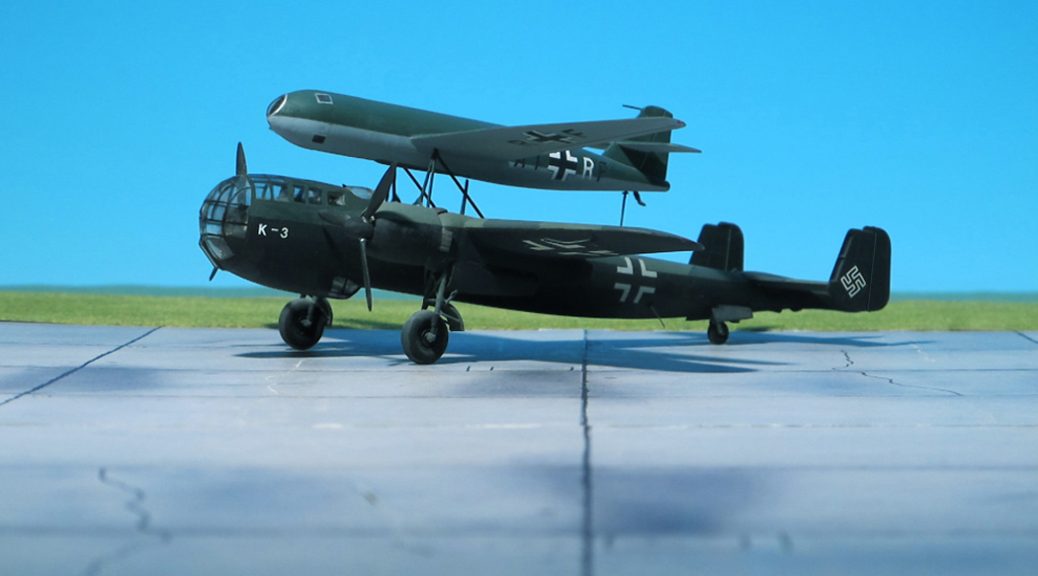TYPE: Rocket-powered high-altitude reconnaissance aircraft. Project
ACCOMMODATION: Pilot only in prone position in pressurized cabin
POWER PLANT: One Walter HWK 109-509 bi-fuel liquid rocket engine, rated at 1,650 kp at 40,000 ft
PERFORMANCE: 559 mph (estimated)
COMMENT: The rocket-powered high-altitude reconnaissance aircraft DFS 228 (Deutsche Forschungsanstalt für Segelflug, German Institute for Sailplane Flight) was designed to climb to altitudes up to 75,459 ft and was than – due to this extreme height – far beyond the operational limits of any other aircraft at its time.
The DFS 228 design was a mid-wing monoplane, using wood whenever possible, with the exception of the pressurized nose compartment, which was an all-metal construction. Fins were plywood covered, ailerons and rudder fabric covered. A landing skid was housed in the center fuselage and could be extended for landing. For take-off a “Mistel” (Mistletoe) pick a pack configuration with landing skids retracted on a carrier Dornier Do 217K was proposed. Equipped with Zeiss infrared camera the aircraft was to be used for powerless reconnaissance missions. To perform these missions the DFS 228 was carried to an altitude of 33,000 ft. After ignition of the Walter HWK 109-509 liquid-fuel rocket engine and separation from its carrier the aircraft was able to reach its service ceiling of app. 75,000 ft within five minutes. The actual reconnaissance mission was done in powerless flight. Descending to its release height of 33,000 ft the aircraft could cover a distance of app. 466 miles and another 218 miles until landing. In case of emergency the pressurized nose compartment, equipped with all life-supporting systems, could be jettisoned by means of four explosive bolts, the module descend to an altitude at which the pilot could survive without oxygen supply. The pilot was ejected through the front windscreen and at the same time a parachute was deployed to bring the pilot safely to the ground.
By the end of WW II one prototype had been built (DFS 228 V1) and flown but only as glider. A second prototype DFS 228 V2 was in advanced stage. However, flight testing was only performed in a non-powered glide and a height of 33,000 ft resp.75,000 ft was not exceeded (Ref 17, 24).














